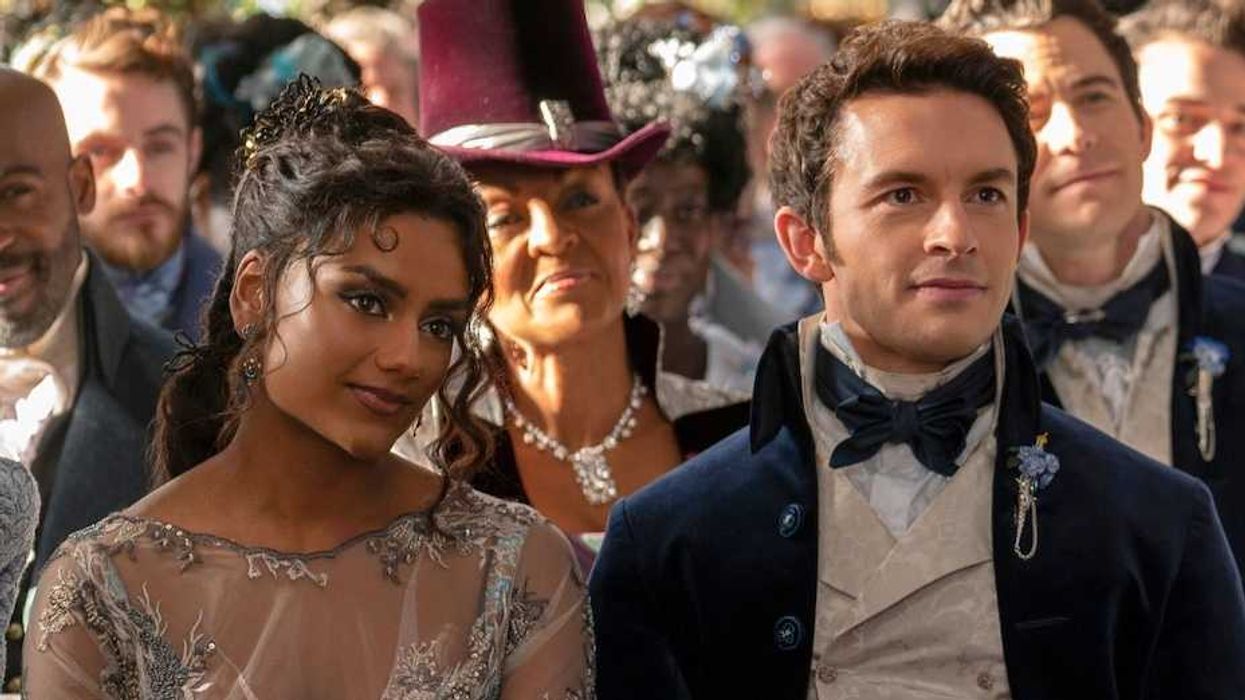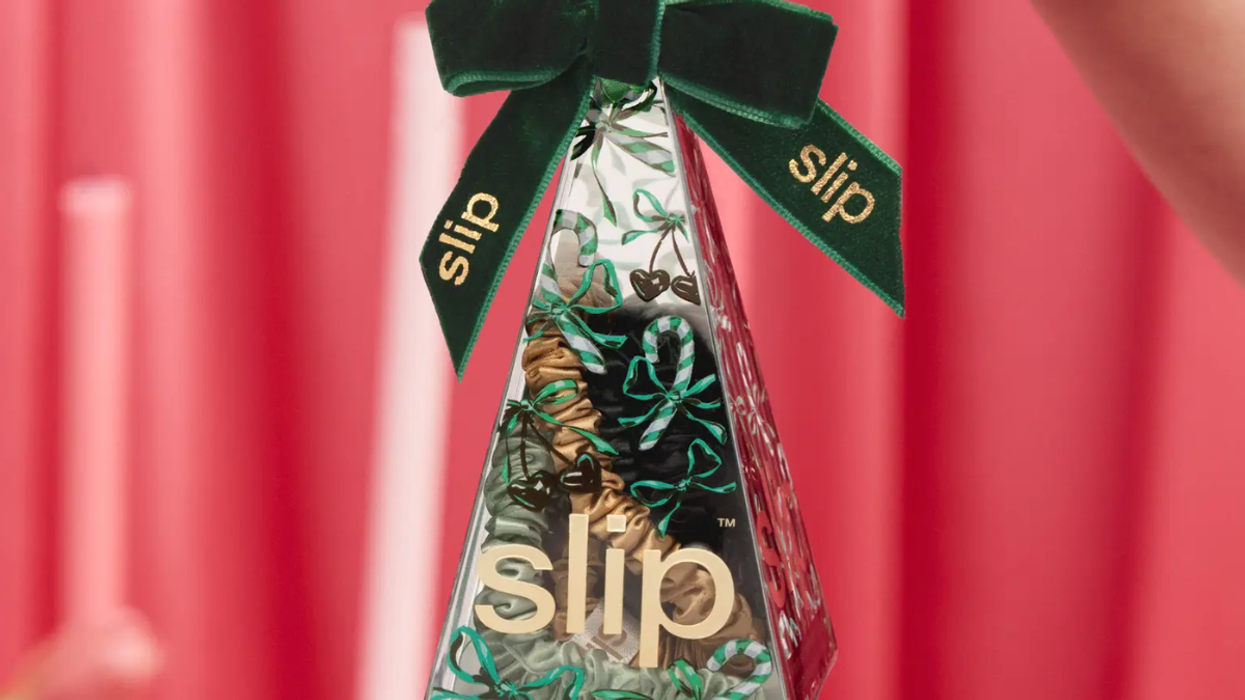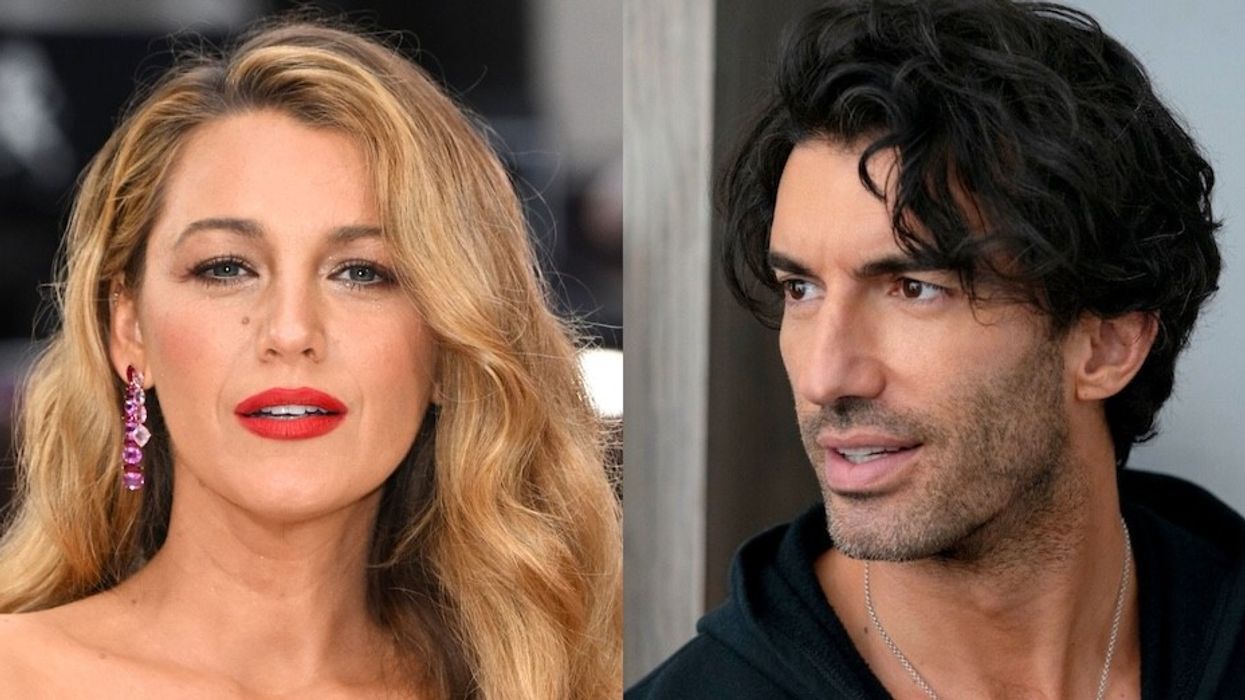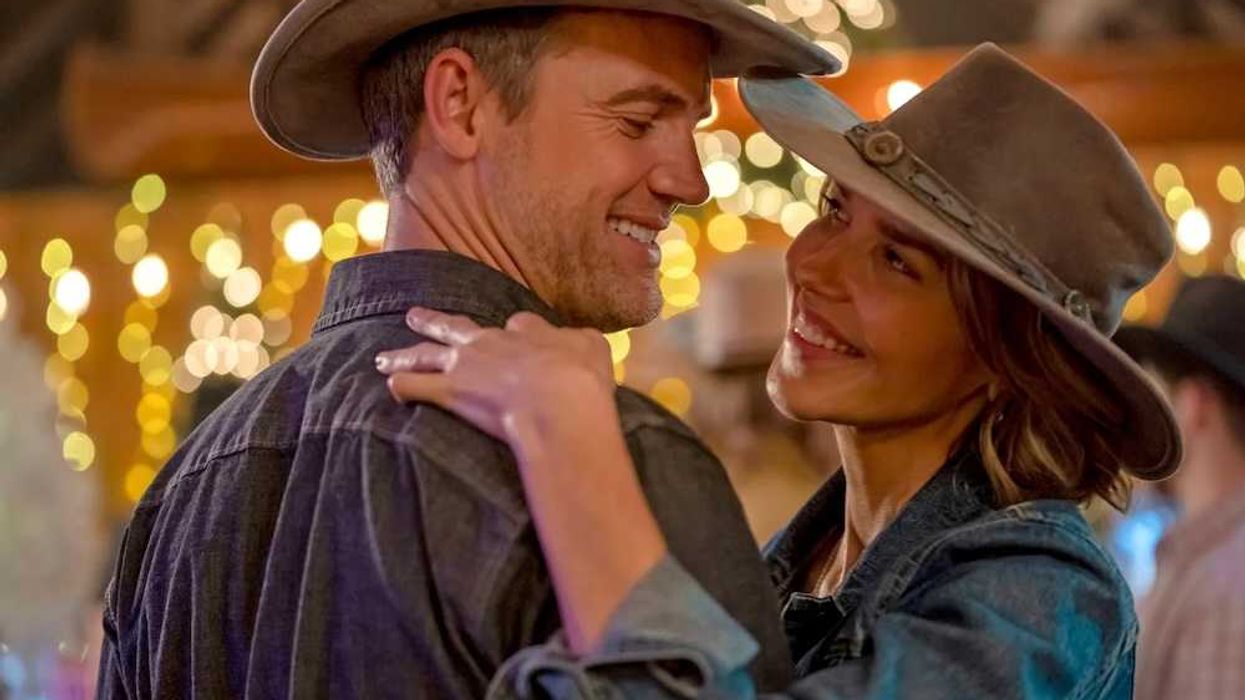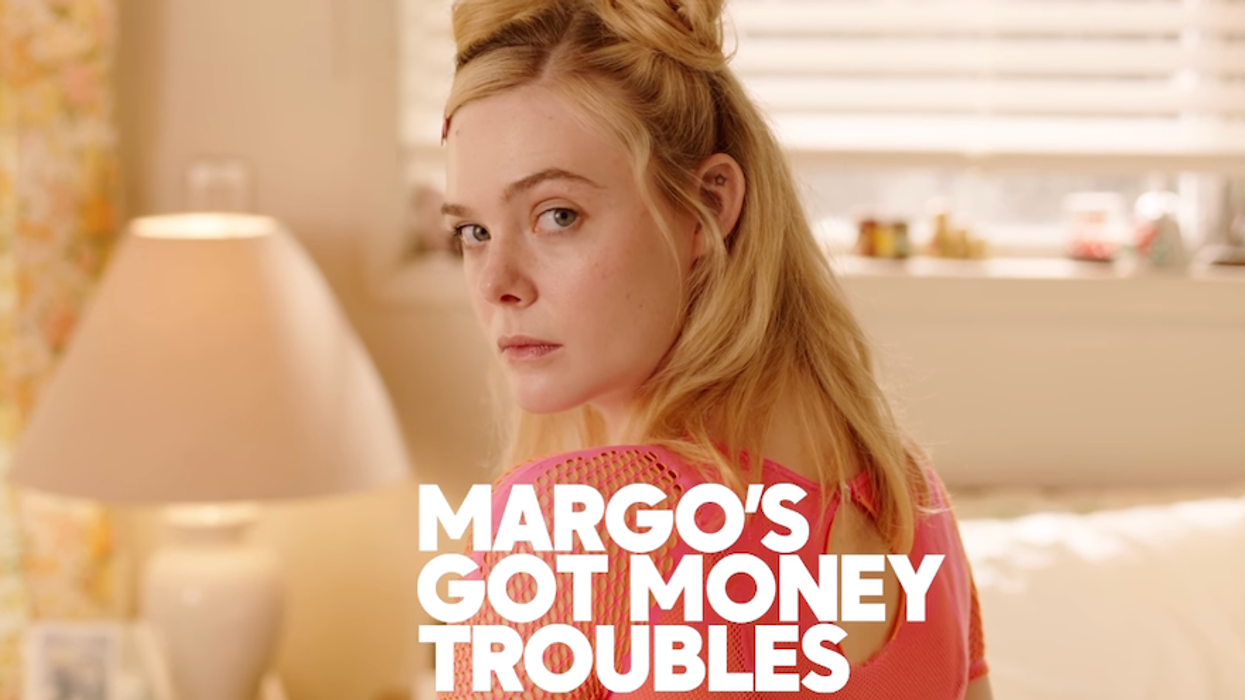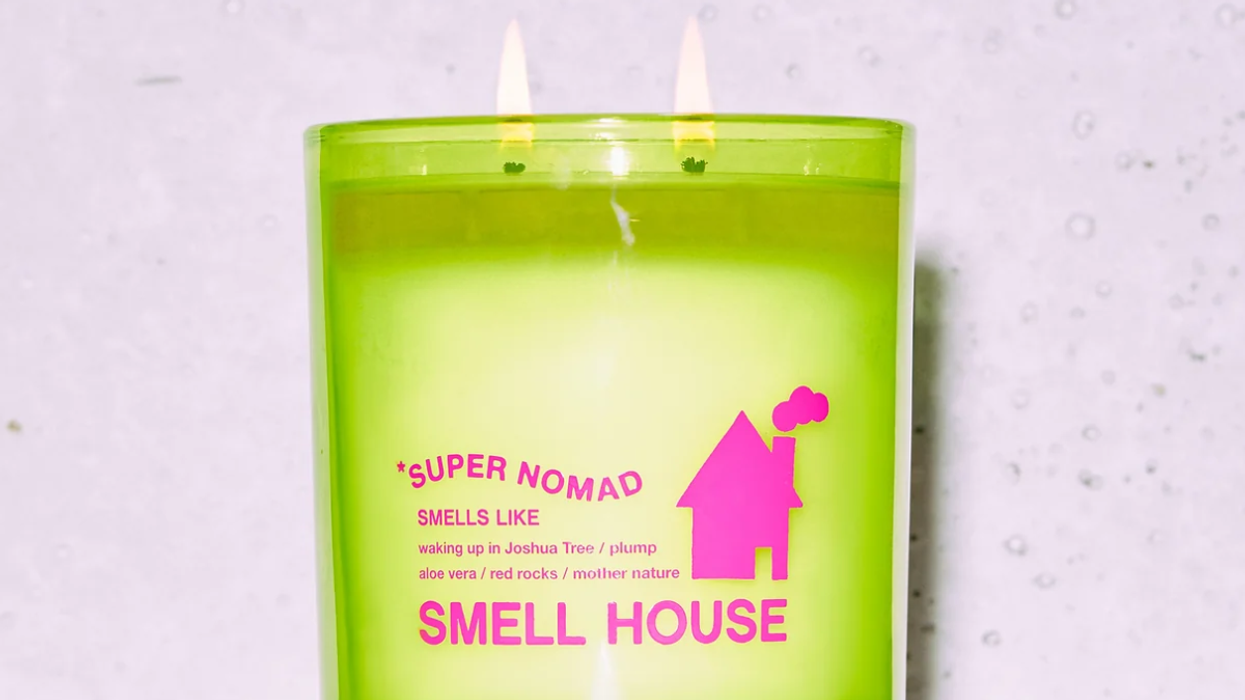"Making art in times of stress is like trying to run in humidity. Creativity requires a certain amount of relaxation and letting go, and that's really hard when there are so many things in the world that are so hard to wrap your head around."
Lisa Congdon On Creativity, Activism, and Finding Your Flow
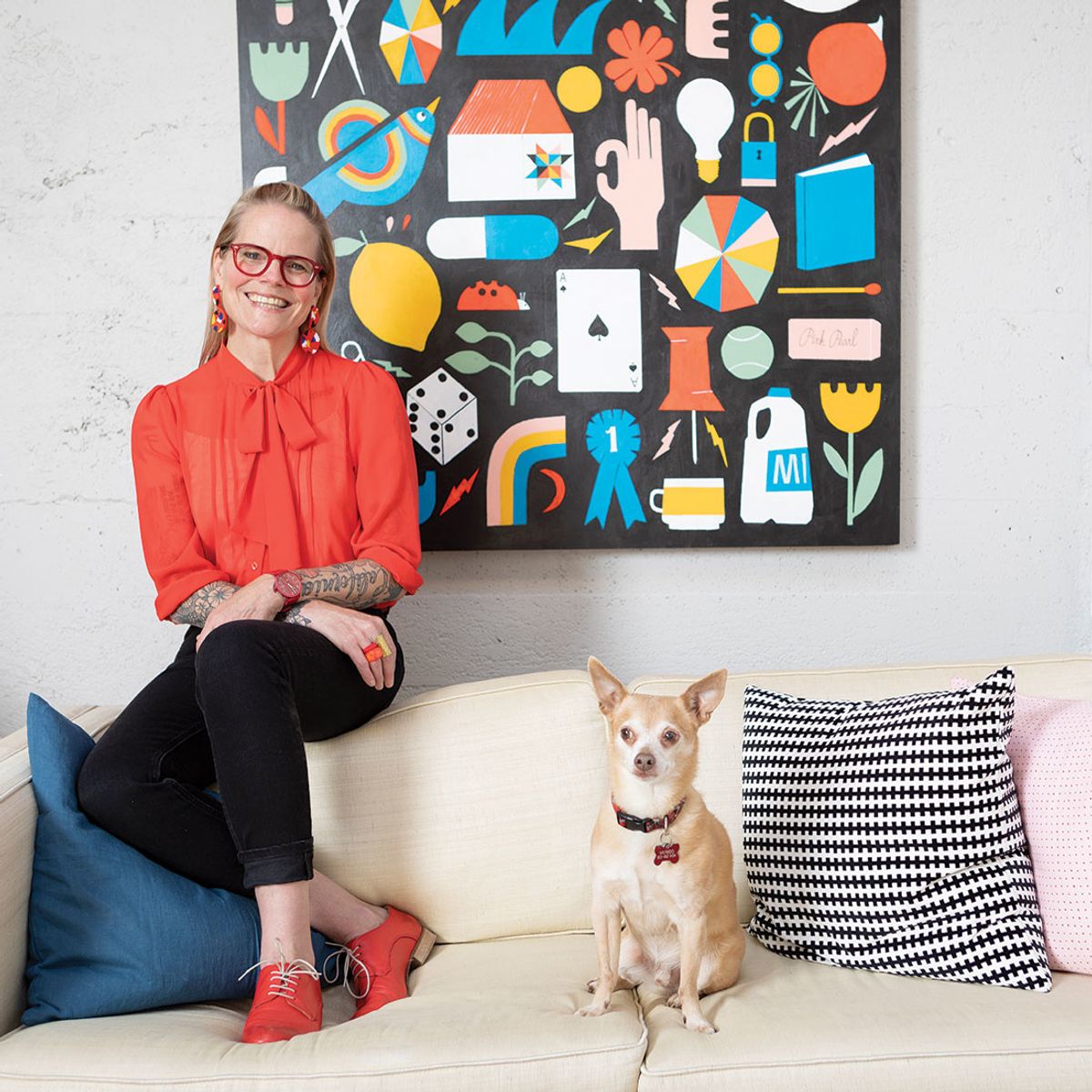
Lisa Congdon on Creativity, Activism, and Finding Your Flow
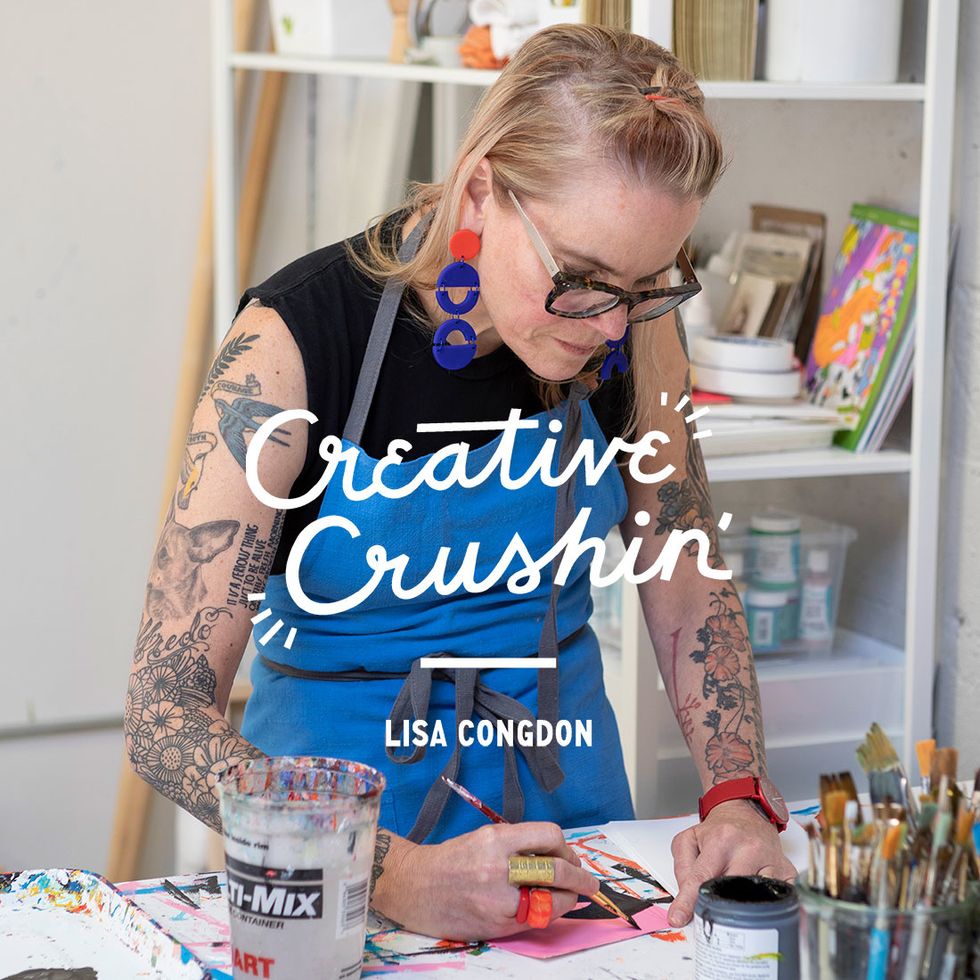
If you're a fan of bright colors, folk art, social justice and heartstring-pulling work, you've definitely seen the art of Lisa Congdon. Lisa's ability to capture complicated feelings and emotions in her work is truly magical. She manages to infuse a breath of fresh air into meaningful stories and heavy topics, and puts just as much care and love into the light and airy pieces she's been creating for over 20 years.
Anjelika Temple here, co-founder of Brit + Co. I first became familiar with Lisa Congdon's work over 10 years ago, when I worked at 20x200 and was in touch with her about an upcoming print edition we were in the midst of producing. Since then, I've been a total fangirl and am deeply honored to be able to share a slice of her creative journey with all of you in this edition of Creative Crushin'.
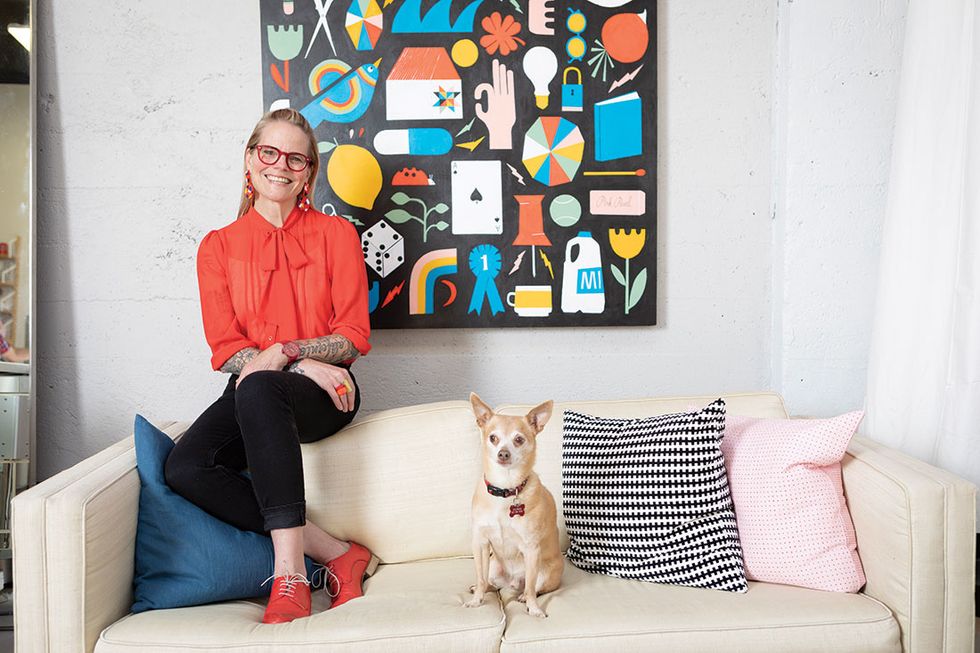
From her first art show via a Flickr connection to her most recent project, a playful children's picture book called "Round", Lisa is as prolific as she is authentic, genuine and so giving of herself and what she's learned to everyone that's game to learn. Read on and take in the creative inspiration.
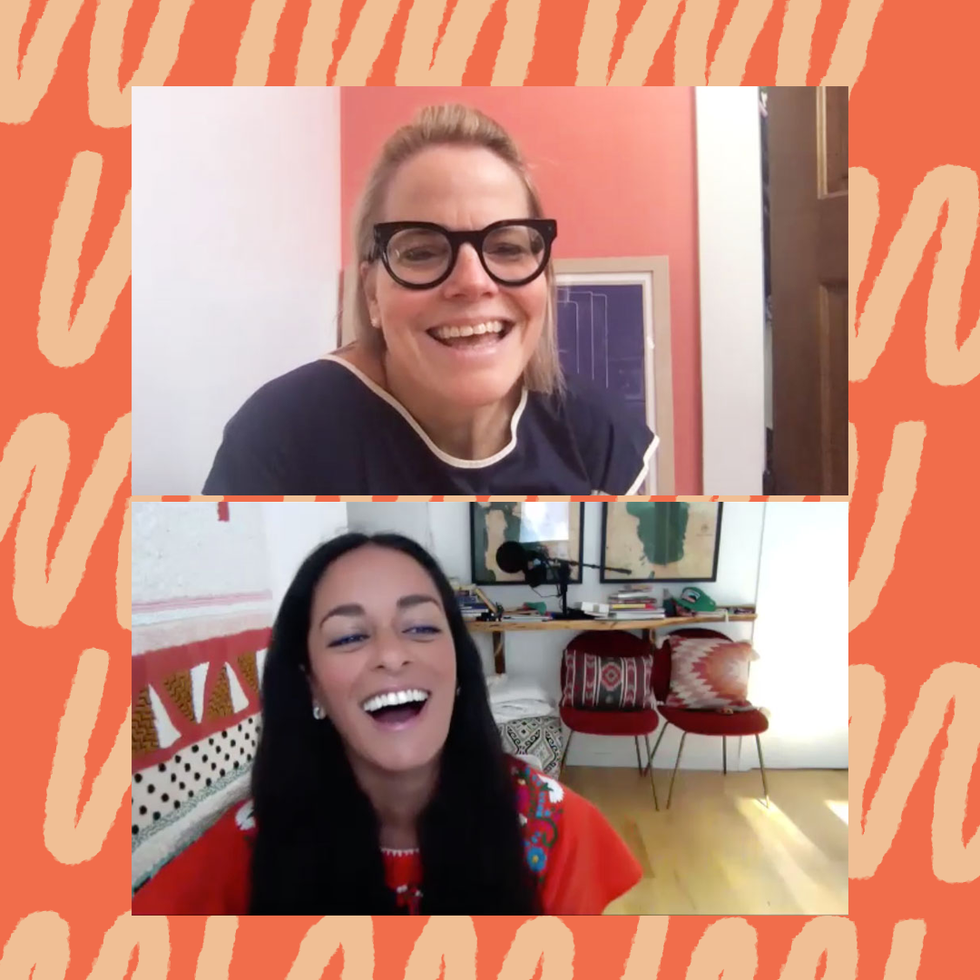
Anj: Let's kick things off by getting to know you! What's the quick version of your life story?
Lisa: I was born in upstate New York in a little city called Schenectady, which is outside of the capital, Albany, and that was in 1968. My dad is a scientist. He's retired now. Both my parents are in their 80s now, and my mom is an artist, but she was kind of similar to me, very much a hobby artist, and now takes commissions and does things on a more professional level, even still in her 80s.
I take after her in so many ways. She's a risk taker. She does stuff even though she doesn't know what she's doing. She'll try anything. She doesn't have that kind of perfectionist fear gene that so many people have, and I inherited that from her. That's not to say I don't have fear, it's just that part of why I've made this professional career out of my creativity is that I'm willing to try things even though I don't know what I'm doing.
So in my 20s, when I discovered creativity as a hobby, similar to what my mom was doing, it was kind of a surprise to everyone. I think people expected me to maybe do great things in the world, but not necessarily as an artist. In fact, I thought I was a terrible artist. Then, when I was in my early 30s, so 20 years ago, I went through a big breakup with somebody I had been with for almost a decade, and I changed jobs. I went from working as an elementary school teacher to working in an office.
I think what happened was that I really felt this kind of dearth of creativity in my life. Teaching little kids forces you to make things interesting for them, so you have to be really creative. I went to work at an office job and I found myself kind of depressed. I was lonely because I was single for the first time in my adult life, and I just kind of set up this little art station at my kitchen table. I wouldn't have even called it a studio. I just started experimenting, and I started taking classes at community colleges. At the LGTBQ center, I took this drawing class, and I just kind of fell in love with the process of making.
This was in the early 2000s, so this was at the birth of the Internet... not the birth of the Internet at large, but the birth of the Internet as a space for creative people. Flickr was becoming a thing, blogging was becoming a thing, and there were not yet online classes, Brit + Co, or learning platforms, no social media, but there was this DIY movement happening on the Internet. I started a blog and I started sharing pictures of the crappy stuff I was making. Let's be clear, my work did not look the way it looks now. I was very much a beginner, but I loved it, and I just kept working at it. Then, at some point later on, I realized I could make a living at it if I kind of pivoted in all of the right directions, which included both getting better, developing my skills, but also working on the business side of it, too. So, that's the short long version.
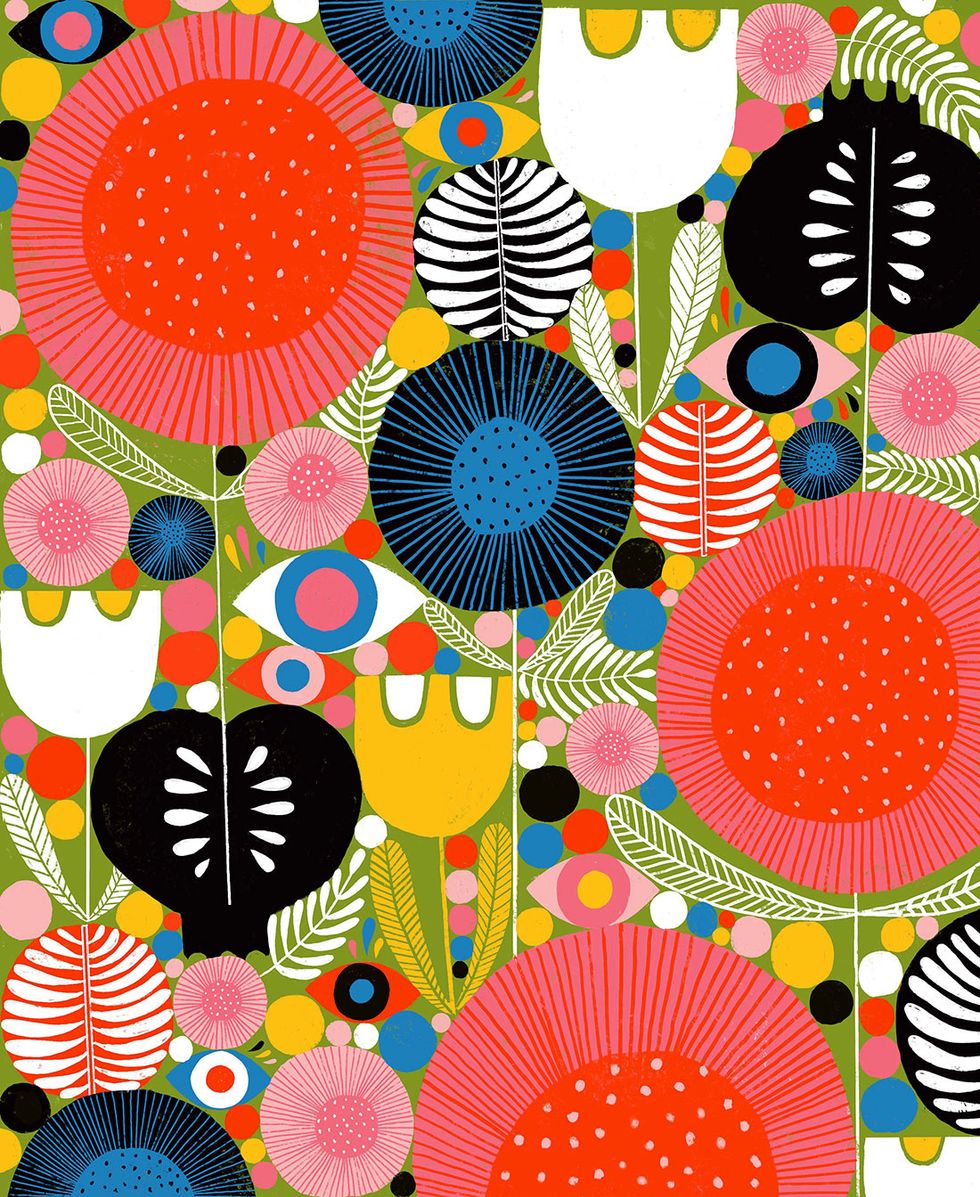
Anj: Tell me more about what it was like when you realized "Hey, maybe this can be my career?" Was there a specific spark or turning point when you thought, "All right, let's see?"
Lisa: One of the moments was in 2006 when I had my first show, and that came about because I think I had posted some images of some stuff on Flickr, which some of you are probably too young to remember. It was this photo-sharing site, which I like to call the original social media, because you could follow people and post your work and like and comment and all the things that are now so normal in our lives. I started meeting people on Flickr, and this woman who owned a store in Seattle asked me if I wanted to have a show. My mind was blown. She asked me if I wanted to have a show because she was seeing the stuff I was making, and I remember sitting at my desk the day that she ... and I was like "Oh my God, this is real." Butterflies and everything. "I'm an artist. Wow, this is so cool!" Then, I started getting inquiries from the hair salon where I went to get my hair done in San Francisco, and there was another little shop in San Francisco called the Candy Store where I had a show, and this was all 2006-2007. So, that started happening. I got an inquiry from Poketo, a brand-new (at the time) Los Angeles-based brand, and I released a bunch of products with them really early on.
So, it was kind of like "Okay, let's see." At the time, this whole idea of being an illustrator was something I couldn't really wrap my head around, but I thought, "All right, maybe if I can figure out the illustration part and do these other things, and then kind of cobble together some kind of income ... " At the time, social media was kind of starting. There was no Instagram yet, but there was Facebook. I made a fan page. I got on Twitter. I had this blog and I just started directing traffic to my blog. I started an Etsy shop in 2007, and I started to make a little bit of money, and in 2008, I was so lucky. I signed with an agent, and slowly, things started to happen. Now, what that didn't equal at the time was money. I was still working part-time at my job and, even after I left my job, I was freelancing for my old education non-profit where I worked because it was so hard in the beginning, but I was determined.
In hindsight, I realized it happened really quickly, but it felt like it took forever, especially to get to the point where I was making enough money to pay my mortgage, buy food, get myself out of debt, and that kind of thing.
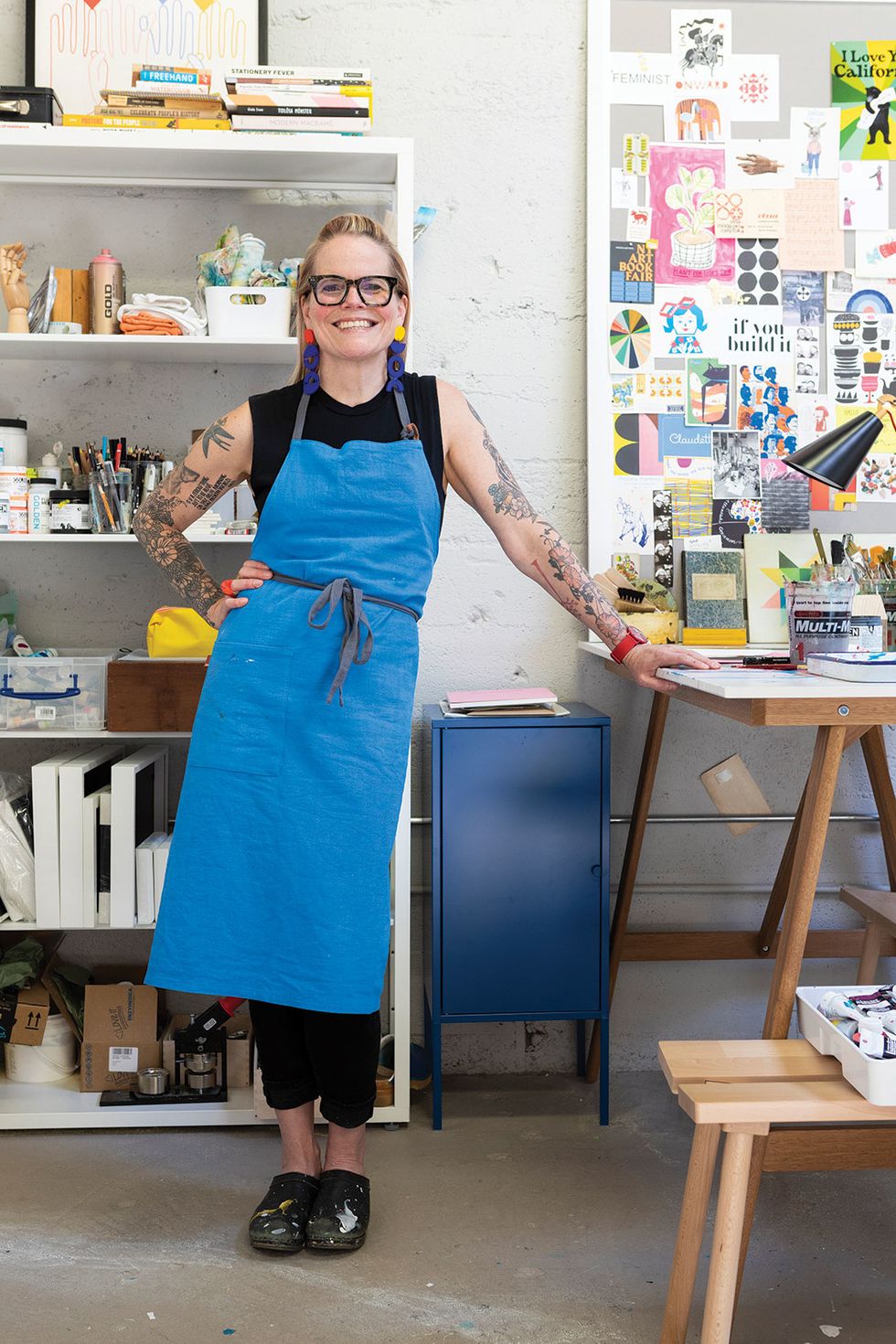
Anj: Bringing it back to your creative process, talk to me more about what the creative flow feels like for you, and what you love about making things.
Lisa: We were talking earlier about the excitement I felt when somebody wanted to give me their space to take over to hang art. For me, it's this combination of the enjoyment of making something that, to me, looks cool or is beautiful, interesting, or says something, but it's also about how other people react to it. There's my creative process, which is super satisfying to me because it's problem solving, it's kind of seeing your ideas come to life, and that is all super satisfying.
That's why I think being an artist in this time in history is such a blessing for me because I get to share my work with other people, and then that is super exciting to me, too. I'm really interested in seeing other people's reactions to my work, whether it's through my books or through social media, and that, to me, is just as motivating as the feelings I have when I'm creating something. I got my first taste of that back in the day when I had my first show. There's something about interacting with my audience that I love.
I think people imagine that people like me who do a lot of work and are identified as being prolific, that we sit around all day in this state of flow, and that we're drawing and painting, listening to NPR and classical music, drinking tea, and it's all so easy. I mean, there are definitely days that are like that. There are definitely days where I'm just like "God, I'm the luckiest person on the Earth. I get to do this for a living and I love it," everything's flowing out of me perfectly, and I'm so satisfied with everything I'm doing, but that's maybe 20% of the time, which isn't bad. The rest of the time, it's frustration, deadlines, not being in the mood to draw something but I have to for this job that I accepted two weeks ago, or not having any good ideas. Especially in the beginning, I wasn't as skilled as I am now, so just rendering things that I was supposed to make took longer, and so it was exhausting. So, I do definitely have that flow state sometimes, where I'm just really into it, but most of the time, it's hard.
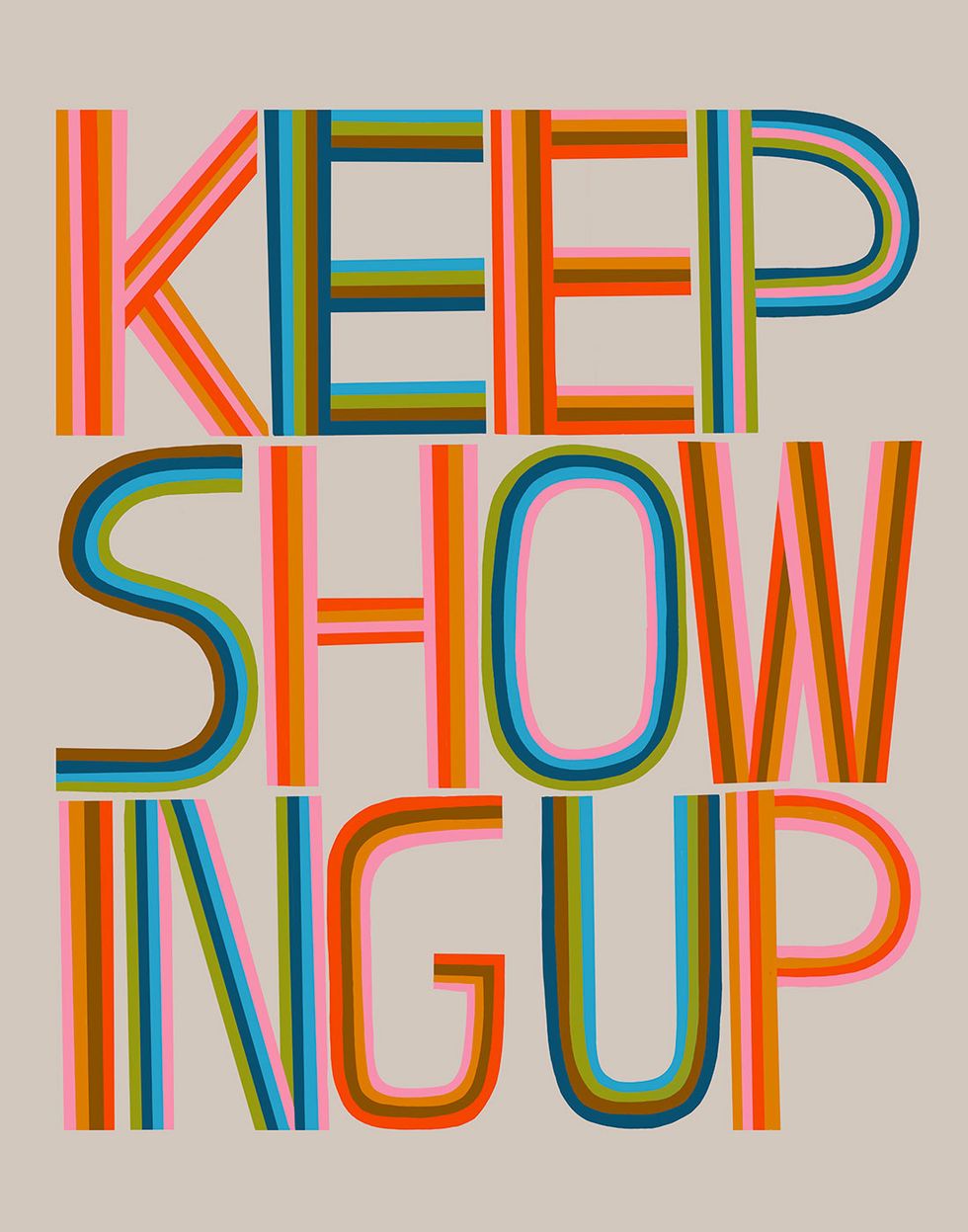
Anj: Your work is so playful, colorful, a clear folk art influence, and has such a recognizable color palette and aesthetic. How did you hone in on it?
Lisa: You know, I've always been influenced by two of the things that you mentioned, which is folk art and also color. It seems weird to say you're influenced by color, but I really am. I'm drawn to other people's art based on color or lack of, you know what I mean? Or the palette. It's a thing that a lot of artists don't get. They're really good at rendering things, but they don't necessarily have a sense of color. Another thing that has always been a huge influence to me is mid-century art and design. Alexander Girard is my absolute all-time favorite artist. Interestingly, he was also influenced by folk art and was a founder of the Folk Art Museum in Santa Fe. So, he's always the example I give of stylistically. He also was a collector of a lot of things and that's a huge part of my story. I draw a lot of my collections or imaginary collections. I love drawing arrangements of things, so order is also very important to me. I'm always drawing on the imaginary grid.
All of that has sort of been part of my story all along, even when my skillset wasn't as developed as it is now, but I would also say that, and I talk about this a lot: I wrote this book called "Find Your Artistic Voice", and one of the things that people ask me the most is how does one find their style? How does one arrive at a place where things are sort of locked and things are recognizable? For me, I always say I could paraphrase the book in one sentence, which is show up and just work at it: draw every day, make ceramics every day, or whatever your thing is, do it every day. You can't do something every day, practice it, refine it, et cetera, without it developing into something that's truly, an extension of your DNA.
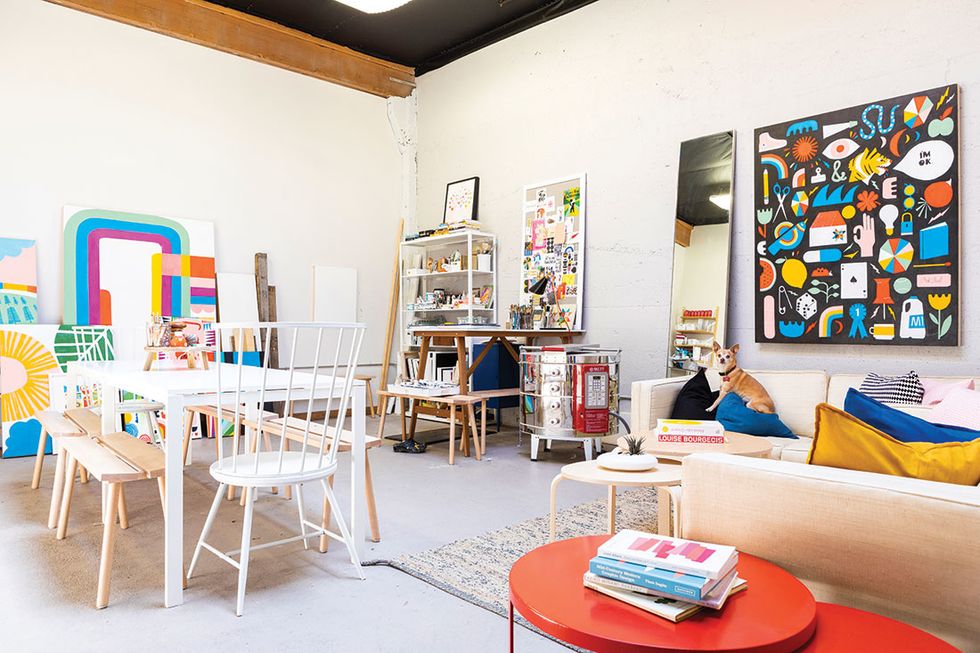
A lot of what a person's style is, is already in there from influences or the stuff that we find beautiful. Our brains are constantly filtering visual stimuli, especially in this day and age. You can't walk down the street without seeing a cool billboard or a mural, or walk into Target and see cool things on t-shirts. We're bombarded, not to mention what's on our phones and what we're scrolling through. Your brain, even if you're not conscious of it, is constantly saying yes, no, yes, no, yes, no. You could walk by a million murals, billboards or whatever, walk into a stationery store, and walk by a million cards, but then you stop at one because it speaks to you. You're like "This is the most beautiful card," or "This is the most beautiful mural." There's a reason: because it's something about your taste that resonates.
So, we're always collecting this and that, and "Oh, who made that? Okay, I'm going to look her up when I get home. Oh, wow, she has a website. Oh, look at her influences. Oh, I'm going to go down that rabbit hole and see who she's influenced by." So, that's where we collect influences, and then, hopefully, we're collecting lots of them so that eventually, our work might look very similar to somebody who we're influenced by, but eventually, we kind of develop our own style, and that's just kind of a normal part of the trajectory.
For me, it was like that. It was just collecting influences, immersing myself in the world of art and design. I like this. I want my work to be more like this. I love the look and feel of this. It's sort of a mishmash of all of those things. Also, just getting better at drawing and executing, and my skills improved. I feel like, in the last five or six years, I kind of arrived in this place where yeah, I have this identifiable style, and it's crazy because people are like "It only happened five or six years ago? You've been making art for 20 years," and I'm like "Yeah, it takes a really long time." I finally don't feel like I'm still searching. That doesn't mean that my work still won't evolve. It doesn't mean that, eventually, I won't land on some new inspiration that makes my work pivot in a different way, but that's what finding your voice feels like, or actually finding that flow.
It's like you arrive at this place where you actually like your work as much as other people do. I started getting my work tattooed on my body and it took me forever to get there because I realized I didn't really like my work very much before, and then I finally was like "Okay, I like it enough to tattoo it on my own body. That's a big deal."
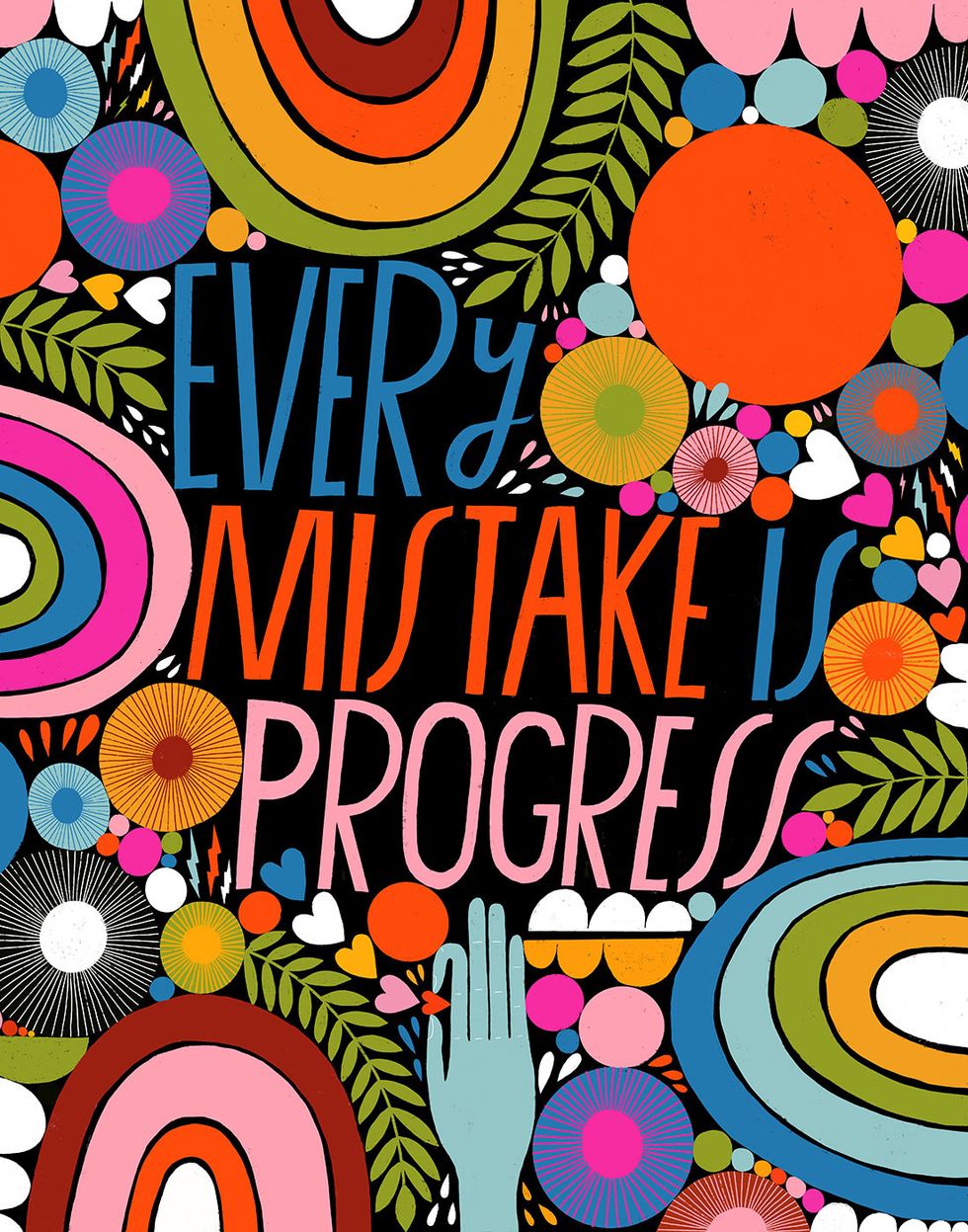
Anj: So, just riffing off of that, I think that a lot of people, myself included, when they're embarking on a new body of work or trying to find their voice, feel intimidated by all the artists/humans out there doing similar things. How do you give advice or even deal with this yourself? That self-doubt and that "I don't know that I have something to visually say?"
Lisa: That's a totally normal feeling. I feel like I kind of, in the last few years, got over a hump, and it was around the time that I felt very kind of solid in my own work. It is so natural to compare yourself to other people. I mean, how can we not? Not just the quality of our work or the ideas behind our work, like "That's such a great idea, why didn't I think of that," kind of thing, but also, on social media, it's like "Oh, so many people like her work. I feel like my work is just as good. Why don't as many people like it? We have the same amount of Instagram followers." There's this whole mind game we play with ourselves.
I realized about three or four years ago that I was spending an inordinate amount of energy having those thoughts, and I think a lot of people would've imagined that someone as far along in my career wouldn't have had them anymore. I would admit to people that I also had anxiety around social media, and people were surprised. They're like "Oh, you seem so confident, so many people love what you do, you have so much engagement," and blah, blah, blah. Yet, I was really struggling, not to the point of it being debilitating, but I would post something that I wanted people to be excited about and maybe they weren't as excited as I wanted them to be, and then I would put too much weight on that instead of my own feelings about whatever it is I was posting. It would bum me out, you know what I mean? I think most people can relate to that.
So, one summer, I started working with a coach, and one of the main things I worked with him on was letting go of these expectations around social media and only posting when I felt like I really had something to say, and posting regardless of whether or not I thought the thing was going to be Instagram-friendly or not. Really being authentic and really honoring my own creative process and my own voice versus whether or not other people liked it, it got engagement, or it sold in my shop, if it was something I was selling. I set my mind to it. It was extremely intentional on my part. I did a lot of work with him, talking through what that was like and how I could shift my perspective.
I also had to get over this impostor syndrome situation, which was "I suck, I'm just lucky to be here," and really, that was related to the social media anxiety. I really turned a corner that year. I wrote about it, I meditated on it, and every time I posted, I promised myself that I was going to honor my own experience and not worry about what other people thought. It took a lot of effort, but I can honestly say I've worked through it. There are moments every now and again where I feel disappointed, there are moments when I still have a slight bit of impostor syndrome, there are moments when I still compare myself to other people. I'm human, but do I dwell on it? Does it control my life? No.
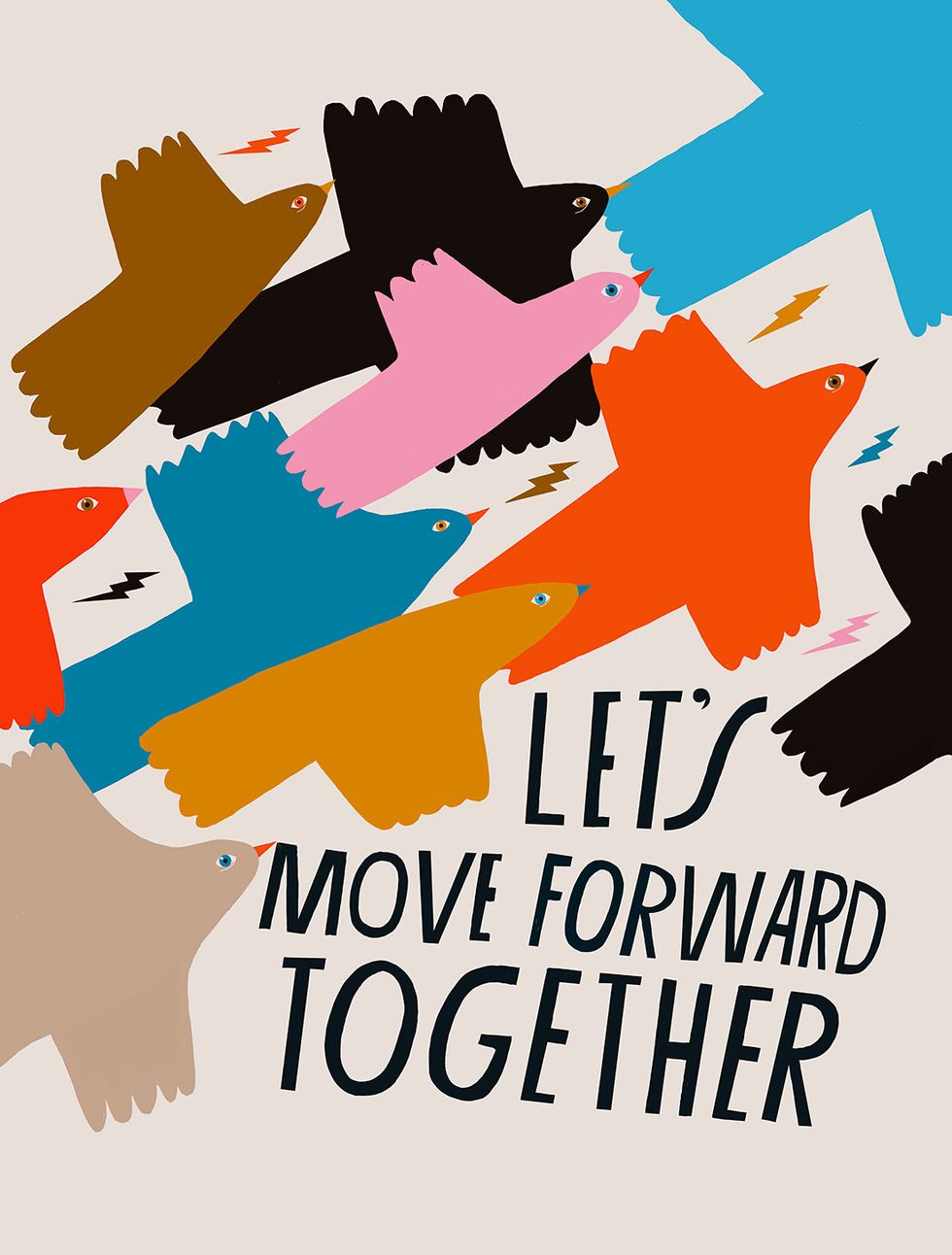
Anj: On the note of putting it all out there, talk to me more about how activism comes into play with your work.
[Editor's Note: This interview andconversation took place before the November 2020 election.]
Lisa: I've integrated so much activism into my postings and to my Instagram in particular, and into my work, I had to really let go of what other people thought because the minute you start doing that, you're going to lose followers, people are going to not agree with you, and I constantly had to say "I'm here to be me. I'm not here to make you comfortable, I'm not here to please you. I'm here to be me." That also really helped me. I've always kind of been open about where I'm coming from ... I say kind of because I've definitely done more lately, but even before the 2016 election, I've been openly gay since I was in my early 20s, I've never hidden it from anywhere, at any job, at any platform. In fact, I talk about it like it's no big deal because I think that's kind of better than anything: just people casually seeing me with my wife and things like that. That's always sort of been part of my life.
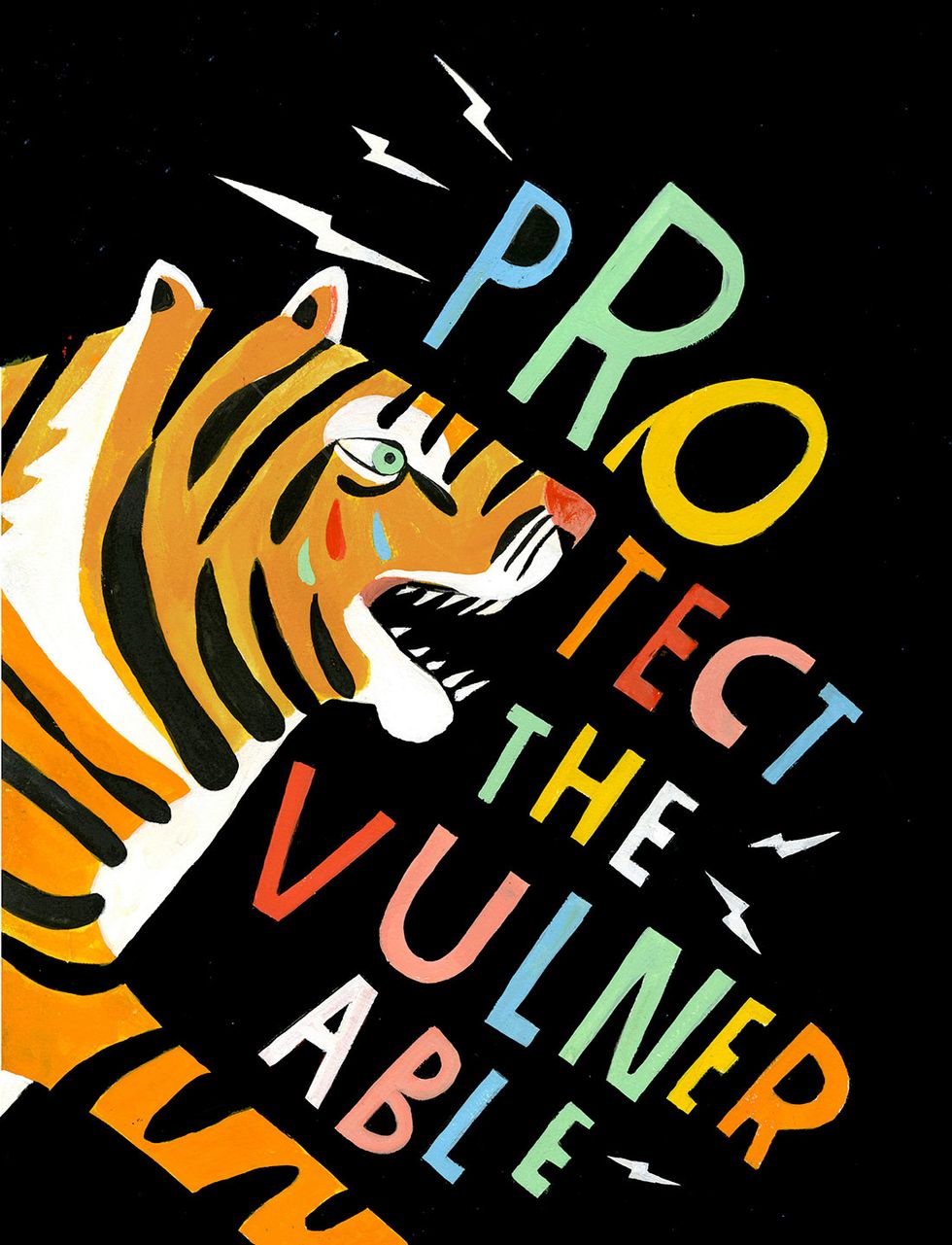
My best friend is black. The reason I bring that up is it's an important part of how I sort of show up in the world: that I am in constant interaction every single day with somebody whose experience is vastly different than mine. We are so similar in so many ways, we are both artists, but our experience walking through the world is totally different. That has been personally the most important experience of my life: to attempt to see the world through this person that I love so much. The pain that she experiences, the confusion she experiences, and the anger she experiences, and sort of waking myself up to that. That, in addition to my own sort of being part of a marginalized group myself has made it almost impossible for me not to talk about social justice in my work because it's such an important part of my everyday experience, including my need to do work on myself.
After the 2016 election, I was so angry about the rights of people being taken away and the massive shift in policies in the US government, and I started writing about it. I was like "I don't care what anybody says, this is too important." I feel like it seems like everybody does that now, but I was one of very few artists in the beginning who was willing to just really put her neck out there. So, I started talking about stuff. I started writing about it. Then, it just kind of became something I was known for, and I started getting asked to design things for non-profit organizations and for different marches and initiatives. I started raising money through that work and drawing attention to different causes. I started really loving that work, and it became a really important part of my voice and my identity. Then, in the last year, things have been so wack that it's just times 10 now. Now, I can't imagine ever going back.
It's so important to me personally, and it's so important for the world, that I feel like I have a responsibility. People often say ... "We're not interested in your politics, we just want your pretty pictures," basically. I had to write a couple very intense posts about why I was making this work and that a lot of people argue that all art is political... what you choose not to represent is a political statement in and of itself, so that I was making overtly political work was one thing, but really, all art is political, and that was something that I didn't necessarily even realize until the last five years.
I get a lot of satisfaction and joy from it. I mean, the stuff we're dealing with isn't joyful, but making work to shift people's attitudes or give people something to be hopeful about feels important to me.

Anj: Now shifting gears to your new children's book! Authored by Jennifer Ward and illustrated by you, tell us what inspired it and what the experience was like. Talk to us more about "Round."
Lisa: I think it was the most fun illustration project I've ever worked on and one of the reasons it was fun is because I wasn't attached to the words. I loved the text in the book but the great thing about picture books is that the text is usually really simple.
In this book in particular, there's a narrative, but it's pretty loose. It's not like there are characters. I mean, some characters emerge a little bit in the book in the form of some of the animals reappearing, but it was a really easy place to start because I could really be me, and also honor the text in the book.
Round... I like to call it a lyrical poem all about round things that we find out in the world. Some are literally round and some are more ... well, not figuratively round, but less perfectly round. It's all in nature, and that's one of the things I love to draw are animals and plants. They wanted me to be me. In fact, the cover is like this kind of big explosion of round things arranged really close together. It's like something I would draw for fun, and it actually was inspired by some drawings I had made of things kind of drawn really close together and in an arrangement. And I love the cover so much. Covers are usually the thing I hate most about a book, which sucks because it's the thing that people see on the shelf, and it causes them to open it or not, so I'm hoping it has a good shelf life because the cover is so colorful.
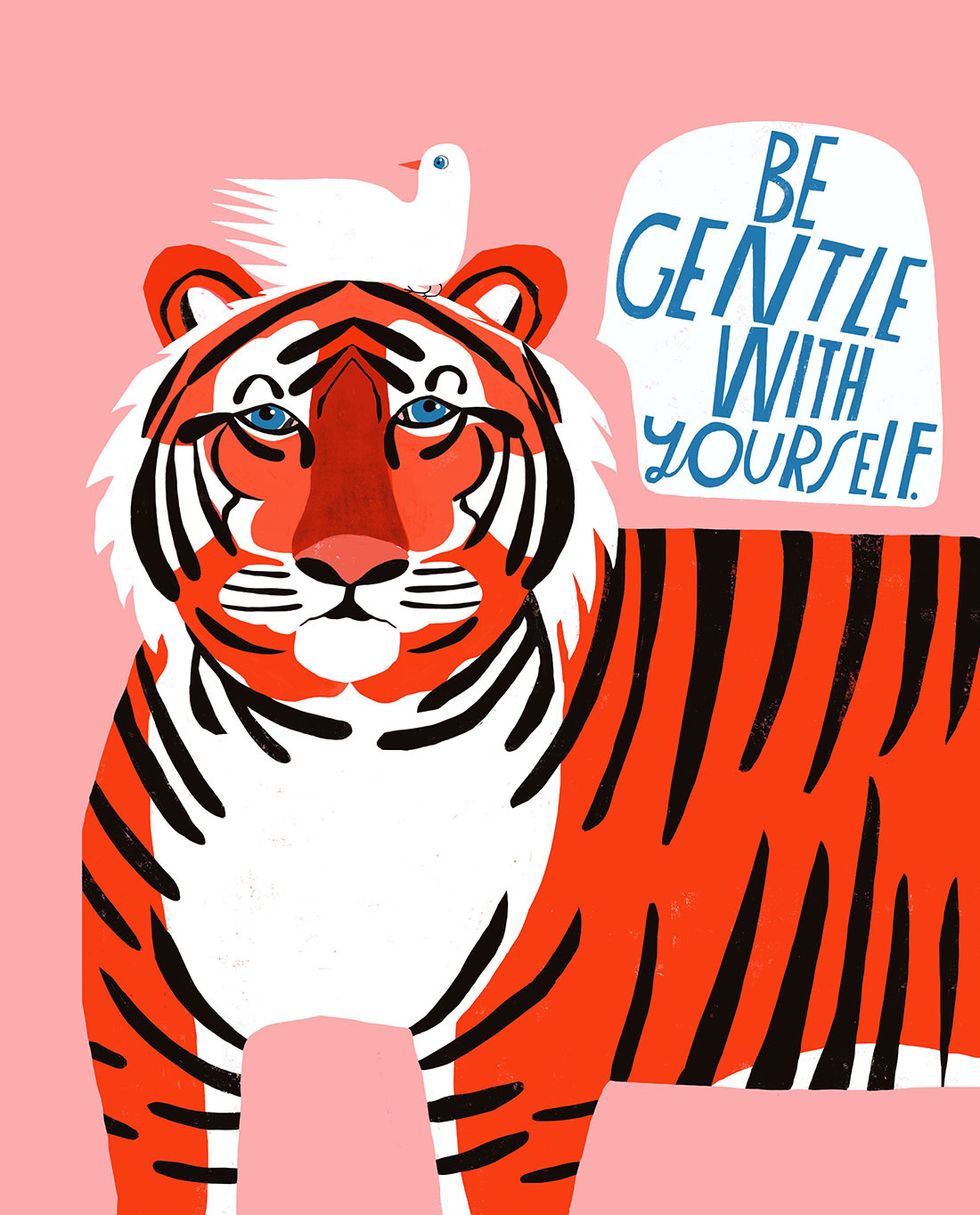
Anj: When you're feeling burnt out, or you're starting a project, what are ways that you reset? What are things that work for you, things that you could recommend to others?
Lisa: When I can, the very first thing I do is take a break. That's not always possible, as you know from somebody who runs a business. Sometimes, you just have to show up and do the work, even when you don't feel like it, and there's a certain amount of grit involved. So, sometimes, I just plow through, force myself to do it, and then I feel better when it's done. If I'm not working on any client projects or client projects that have immediate deadlines, I give myself this passcard. "You don't have to post anything on social media, you don't need to make any new work right now. If you don't feel like it, don't do anything, just go read a book, go take a hike, go shopping," which is, of course, harder now except doing it online because of the pandemic, but go do something else and give yourself permission to not be productive and to kind of give yourself a rest.
Then, during that rest time, what I'll often do is kind of dive into inspiration. I go down a Pinterest rabbit hole or I go to Powell's Books in Portland and plant myself in some aisle that has books about something I'm interested in. Not necessarily art books, maybe history books, picture books, or whatever, and that will sometimes help me kind of get excited about a new direction. Sometimes, I just go to my studio and mess around with clay. I have a kiln. It's not something I'm known for, but I do kind of make and sell ceramics a little bit. It's kind of my fun getting my hands dirty experimental low-pressure nothing hardly ever gets put on Instagram, it's just kind of this fun thing that I do.
I also love to sew. Quilting is one of those things that's so straightforward to me. Aspects of the process take some creativity, but once it's pieced, I can just sit there and stitch and watch Netflix. So, I think taking breaks, allowing yourself to go down rabbit holes of new inspiration that's going to wake you up and light you up a little bit. In the old days, before the pandemic, I would go to museums even, or go shopping in my favorite stores.
Then, the combination of a break, collecting inspiration, maybe getting my hands dirty with some work that's a little bit more tactile and a little less cerebral, eventually, I kind of am able to work through blocks, but they happen to everyone, especially when they're burned out. Even when you're not burned out on art, maybe you're burned out on your kids, the business part, your relationship, or some issue you're having with a family member.
Making art in times of stress is like trying to run in humidity. You can do it, but it feels so exhausting and uncomfortable. We've all been, in the last year, in this really weird time of stress, and I think some people are surprised that they're depressed and anxious, and they can't make art. It's completely normal. Creativity requires a certain amount of relaxation and letting go, and that's really hard when there are so many things in the world that are so hard to wrap your head around.
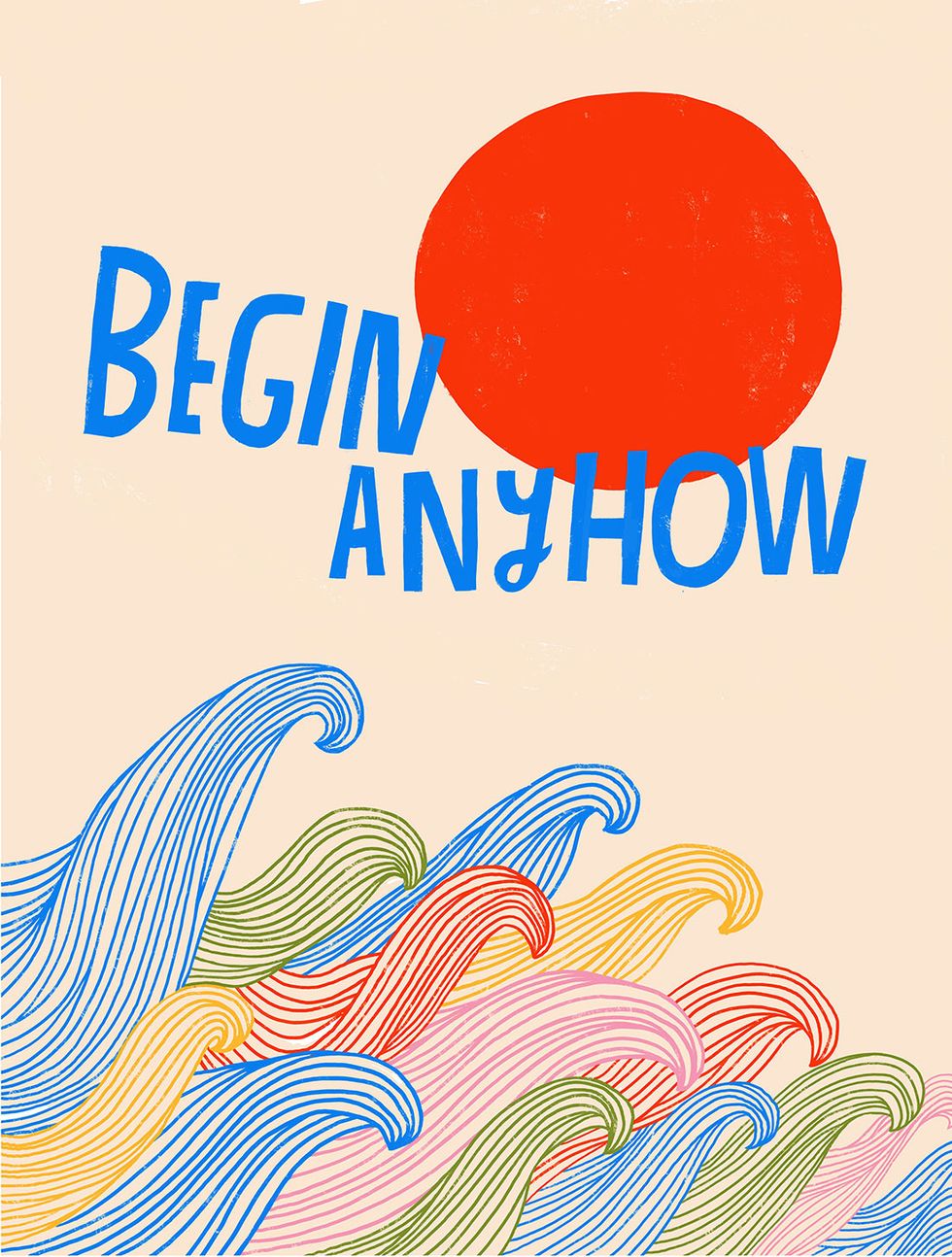
See more of Lisa Congdon's artwork on Instagram @lisacongdon and shop her books, prints and more at lisacongdon.com.



